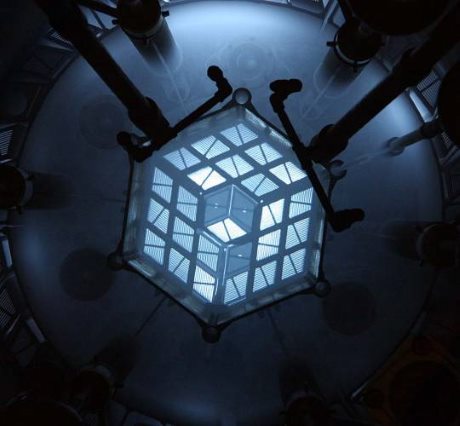The US National Nuclear Security Administration (NNSA) has submitted to the US Nuclear Regulatory Commission a preliminary report on a new uranium fuel that will enable the conversion of six US research reactors from highly enriched uranium to low-enriched uranium.
 |
| A view of MITR's unique reactor core (Image: MIT) |
The preliminary report on uranium-molybdenum (U-Mo) monolithic fuel contains data about the performance of the new fuel in a reactor and how it perfoms under a variety of conditions.
The international community is working to minimise amounts of HEU material, which could potentially be used for nuclear weapons. To that end, programmes are under way to convert research reactors to the use of LEU fuel, which does not present a proliferation risk. In some cases - including six high-performance research reactors in the USA - this can mean designing a new LEU fuel.
Exponential pile
MIT's Nuclear Science and Engineering Department has restored a graphite exponential pile, originally built in 1957, that will provide hands-on access to subcritical nuclear experiments for students as well as serving as a research tool that can be used to study new reactor designs for future nuclear power plants. The device is similar in design to Enrico Fermi's Chicago Pile 1, where the world's first self-sustaining fission chain reaction was achieved on 2 December 1942.
The final slugs of uranium were ceremonially slid into place in the restored device on 2 December 2017 - exactly 75 years after the original experiment.
The US high-performance research reactors pending conversion include the Advanced Test Reactor and the Advanced Test Reactor Critical Assembly, both at the Idaho National Laboratory; the High Flux Isotope Reactor at the Oak Ridge National Laboratory, Tennessee; the Massachusetts Institute of Technology Reactor (MITR) in Cambridge, Massachusetts; the National Bureau of Standards Reactor in Gaithersburg, Maryland; and the University of Missouri Research Reactor in Columbia, Missouri.
The preliminary safety analysis report submitted by MIT and NNSA to the Nuclear Regulatory Commission shows that the MITR can safely operate using the new LEU fuel, NNSA said. Over the next few years, based on feedback from the Nuclear Regulatory Commission's review of the report and from the ongoing tests of the LEU fuel, MIT will submit a final safety analysis report. Once approved by the Nuclear Regulatory Commission, MIT will be able to convert the reactor to the qualified LEU fuel.
MITR is a light-water cooled and moderated, heavy-water reflected reactor which currently uses fuel enriched to 93%. Conversion of MITR will eliminate the transit of about 3 kilograms of HEU fuel per year, the NNSA said.
"MIT's outstanding commitment towards this challenging, yet very important, LEU conversion project is exemplified by the completion of this important milestone," said Jeff Chamberlin, director for NNSA's Office of Conversion.
Researched and written
by World Nuclear News





_63865.jpg)
_18570.jpg)
_16159.jpg)





